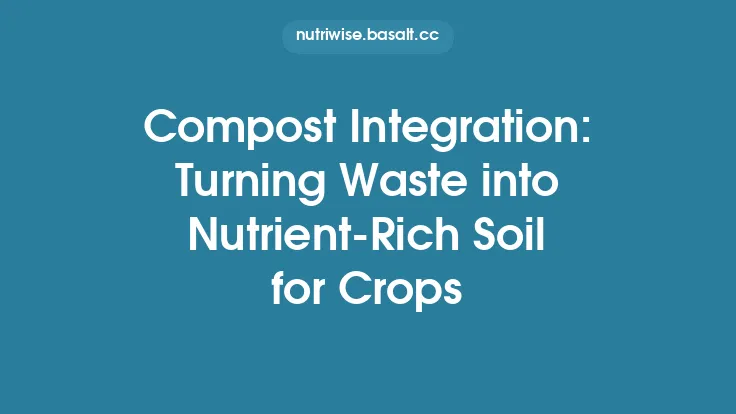Local farms are the backbone of resilient food systems, yet they often operate on thin margins and face challenges that larger agribusinesses can more easily absorb. By taking intentional, everyday actions, consumers can help keep these farms thriving, preserve agricultural diversity, and strengthen the economic fabric of their communities. Below are practical, evidence‑based ways to make a meaningful difference for the growers who bring fresh, seasonal food to our tables.
The Broader Impact of Supporting Local Agriculture
When you choose to buy from a local farmer, the benefits ripple far beyond the immediate transaction.
- Economic Multiplier Effect – Money spent at a farm tends to stay within the region. Studies using input‑output modeling show that each dollar invested in a local farm can generate $1.50–$2.00 in additional economic activity through purchases of farm supplies, local services, and employee wages.
- Preservation of Agricultural Land – Viable farms are less likely to be sold for development. By maintaining a steady revenue stream, farmers can afford to keep land in production, protecting soil carbon stocks and biodiversity.
- Reduced Transportation Footprint – Shorter haul distances cut fuel consumption and associated greenhouse‑gas emissions. Even modest reductions in “food miles” can translate into measurable decreases in a farm’s overall carbon intensity when combined with efficient logistics.
- Cultural Continuity – Many small farms steward heirloom varieties and traditional farming practices that would otherwise disappear. Supporting them helps safeguard genetic resources and culinary heritage for future generations.
Understanding these systemic outcomes underscores why even small, consistent actions by consumers matter.
Direct Purchase Channels
Community‑Supported Agriculture (CSA) Shares
A CSA allows consumers to purchase a season’s worth of produce up front, providing farmers with working capital and a guaranteed market. Participants receive a weekly box of whatever the farm harvests, which can include vegetables, fruits, eggs, dairy, or value‑added products. The model reduces the farmer’s exposure to price volatility and helps smooth cash flow during the planting and growing phases.
Farm Stands and Roadside Markets
Many farms operate on‑site stands where they sell directly to the public. These venues eliminate middlemen, allowing farmers to retain a larger share of the retail price. Look for signage along rural routes, local tourism guides, or farm websites that list stand hours and locations.
Online Farm Platforms
Digital marketplaces such as Farmigo, LocalHarvest, and regional cooperatives enable consumers to order directly from farms and receive deliveries or pick‑up bundles. These platforms often provide transparent pricing, traceability, and the ability to subscribe to recurring orders, further stabilizing farm revenue.
Direct Wholesale to Restaurants and Institutions
If you own or manage a food‑service operation, establishing a direct supply line with a local farm can be mutually beneficial. Contracts for regular deliveries of bulk produce, herbs, or specialty items give farmers predictable demand, while you gain access to fresher, higher‑quality ingredients.
Community Initiatives and Cooperative Models
Agricultural Co‑ops
Cooperatives are member‑owned entities that aggregate the purchasing power of multiple consumers or small businesses. By pooling orders, co‑ops can negotiate better terms for transportation, storage, and processing, reducing costs for individual farmers and buyers alike. Membership often includes voting rights, giving participants a voice in governance and strategic direction.
Farm‑Based Educational Events
Volunteer days, “pick‑your‑own” experiences, and farm tours create direct connections between consumers and growers. While the primary goal is education, many farms charge modest participation fees that supplement income. These events also foster a sense of stewardship, encouraging participants to become repeat customers.
Seed‑Saving and Heirloom Preservation Programs
Supporting farms that maintain seed banks or offer heirloom seed sales helps preserve genetic diversity. Purchasing these seeds not only provides an additional revenue stream but also encourages the cultivation of varieties adapted to local climates and soils.
Advocacy and Policy Engagement
Local Food Policy Councils (LFPCs)
LFPCs bring together stakeholders—farmers, consumers, health officials, and policymakers—to shape municipal food strategies. By joining or supporting an LFPC, you can influence zoning decisions, land‑use policies, and funding allocations that directly affect farm viability.
Incentive Programs for Sustainable Practices
Many jurisdictions offer tax credits, grant programs, or low‑interest loans for farms that adopt conservation practices such as cover cropping, reduced tillage, or renewable energy installations. Advocating for the expansion of these programs helps lower production costs and makes sustainable farming more economically attractive.
Farm Bill Participation
The federal Farm Bill includes provisions for conservation, research, and direct payments to producers. Engaging with elected representatives to ensure that these provisions prioritize small and mid‑size farms can have a lasting impact on the national agricultural landscape.
Investing in Farm Infrastructure
Shared Equipment Cooperatives
High‑cost machinery (e.g., tractors, harvesters) can be a barrier for small farms. Contributing to or establishing a shared‑equipment pool reduces capital expenditures and improves operational efficiency. Some regions offer subsidies for the creation of such cooperatives, amplifying the financial benefit.
On‑Farm Processing Facilities
Investing in small‑scale processing—such as canning, drying, or cheese‑making—allows farmers to add value to raw products, extend shelf life, and capture higher market prices. Community‑backed funding models, like crowd‑sourced capital or local development bonds, can make these projects feasible.
Renewable Energy Installations
Solar panels, wind turbines, and biogas digesters lower energy costs and can generate additional revenue through feed‑in tariffs or renewable energy credits. Supporting farms in adopting these technologies—through grants, low‑interest loans, or direct purchase agreements—enhances long‑term financial resilience.
Fair Labor Practices and Ethical Compensation
Transparent Wage Structures
Ensuring that farm workers receive wages that reflect the true cost of labor is essential for ethical sourcing. Consumers can inquire about labor standards when purchasing directly or through cooperatives, and they can prioritize farms that adhere to fair‑wage certifications.
Worker Housing and Benefits
Some farms provide on‑site housing, health benefits, or educational opportunities for employees. Contributing to programs that improve worker welfare—whether through direct donations, volunteer tutoring, or advocacy for policy incentives—strengthens the entire farm ecosystem.
Leveraging Technology for Direct Support
Blockchain Traceability
Emerging blockchain solutions enable immutable records of a product’s journey from seed to shelf. By purchasing from farms that employ such technology, consumers gain confidence in the authenticity of their purchase and can verify that a fair share of revenue reaches the grower.
Mobile Apps for Real‑Time Ordering
Apps that connect consumers with nearby farms allow for dynamic ordering based on daily harvests. This reduces overproduction and waste, while providing farmers with immediate market signals that can inform planting decisions and labor allocation.
Data‑Driven Demand Forecasting
When consumers share purchasing data (e.g., through subscription services), farms can use predictive analytics to better align production with demand, minimizing the risk of surplus that would otherwise depress prices.
Building Long‑Term Relationships
Seasonal Subscription Models
Beyond traditional CSAs, many farms now offer tiered subscription plans that let customers select product categories (e.g., “vegetable box,” “herb bundle,” “dairy package”) and adjust frequency. Long‑term subscriptions provide a stable revenue base, enabling farms to invest in soil health, diversification, and risk mitigation.
Feedback Loops
Providing constructive feedback—such as preferences for certain varieties, packaging suggestions, or delivery timing—helps farms refine their offerings and improve customer satisfaction. Open communication channels foster trust and encourage repeat business.
Community Recognition Programs
Local “farm of the month” awards, farmer spotlights in community newsletters, or social‑media features amplify a farm’s reputation, attracting new customers and reinforcing existing relationships.
Measuring Your Impact
To ensure that your efforts translate into tangible benefits for local farmers, consider tracking the following metrics:
| Metric | How to Track | Why It Matters |
|---|---|---|
| Dollar Amount Spent Locally | Keep receipts or use budgeting apps with a “local food” category | Directly reflects financial support |
| Number of Farm Visits | Log visits in a journal or digital calendar | Indicates personal engagement and relationship building |
| Volunteer Hours Contributed | Record hours via a volunteer log | Quantifies non‑monetary contributions |
| Policy Actions Taken | Document letters sent, meetings attended, or petitions signed | Shows civic involvement |
| Carbon Savings Estimate | Use online calculators that input food miles and transport mode | Highlights environmental co‑benefits |
By regularly reviewing these indicators, you can adjust your strategies, set new goals, and celebrate progress.
Conclusion
Supporting local farmers is a multifaceted endeavor that blends purchasing decisions, community involvement, advocacy, and strategic investment. Each action—whether buying a weekly CSA share, joining a cooperative, championing fair‑labor policies, or leveraging technology to streamline farm‑to‑consumer connections—contributes to a more resilient, equitable, and sustainable food system. The cumulative effect of these simple, everyday choices ensures that the farms feeding our neighborhoods remain vibrant, innovative, and capable of preserving the agricultural heritage that sustains us all.





